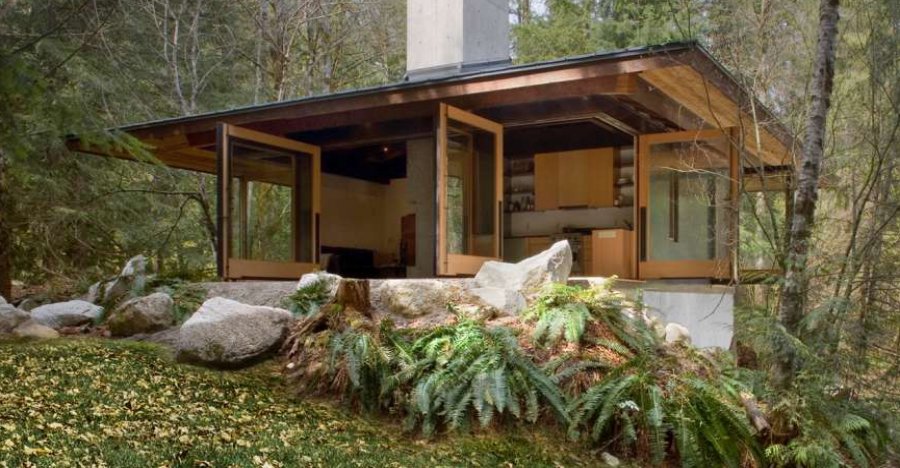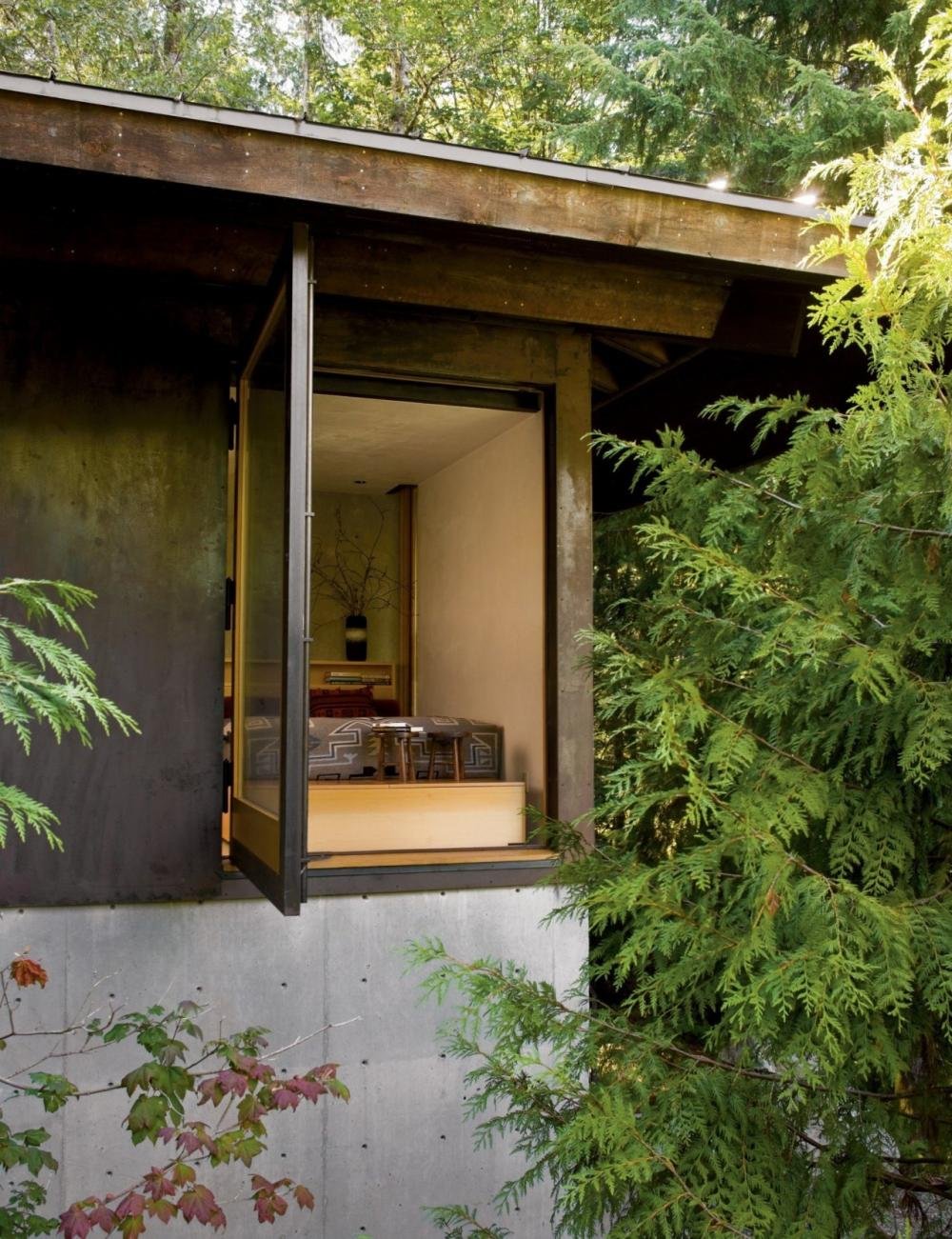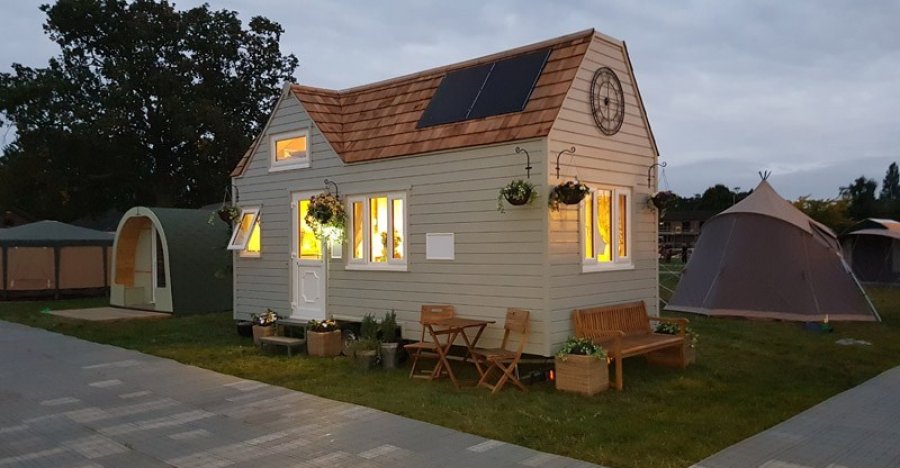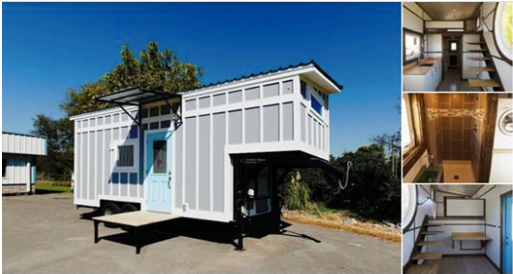The Tye River Cabin is a beautifully designed tiny house located in Skykomish, Washington. The 600 square foot tiny house building is situated in a dense forest location near the Tye River, and this meditative tiny house retreat connects to the nature that surrounds it. The tiny house building has a square base for the two-level structure that is rendered in cast-in-place concrete, with a large central fireplace that serves as the core and the anchor for the cabin building. The cabin building has custom-designed, pivoting glass windows that swing open to reveal the corners and the sides of the space, blurring the line between the inside and outside. On the exterior of the tiny house design rusted mild steel siding is used. The modern cabin building has deep overhangs that help to shelter the main living area from the rain.

The Tye River Cabin strikes a perfect balance with its natural surroundings with the use of concrete, glass and wood. The cabin building has concrete patios that extend the living space outdoors and follow the contours of the landscape towards the water. The cabin building is about being outdoors, not indoors. The tiny home has two bedrooms and a bathroom that are just large enough to make the space comfortable. The wood used for the cabin building construction for the flooring, window frames, rafters, and doors was salvaged from an old warehouse that was slated for demolition. The varying tones of the reclaimed wood add some character and texture to the design. Over time, the cabin building will become more and more muted in its appearance, blending in even more than it already does and eventually disappearing into the forest.
Using reclaimed wood is just one of the ways you can make your home design more environmentally friendly. Reclaimed wood is a popular option these days when it comes to building, and you will find a lot of reclaimed wood in all sorts of furniture and home designs. There are many sources of reclaimed wood to include wooden crates, old furniture, barns, public buildings, retired mills, storm-damaged trees, flooring, furniture, fencing, gymnasiums, ships, bowling alleys and more.
As reclaimed wood becomes more and more readily available, choosing it for your home design can be a benefit to the environment. Some of the reasons that reclaimed wood is such a good choice is that it saves energy because it takes less to refurbish than to cut and transport, it reduces virgin timber harvesting with reclaimed wood being stronger than virgin wood, it eliminates pollution caused by landfill burning, and it reduces fossil fuel use to name a few. Reclaimed wood will also bring character to any home design. Reclaimed wood comes with a history, and it doesn’t conform to a perfect design. Reclaimed wood has natural aged coloring, indentations, and other scars of wear and tear and it has a story to tell. Reclaimed wood is just one step towards keeping materials out of the landfill, and a good idea when it comes to your furniture and building options.


